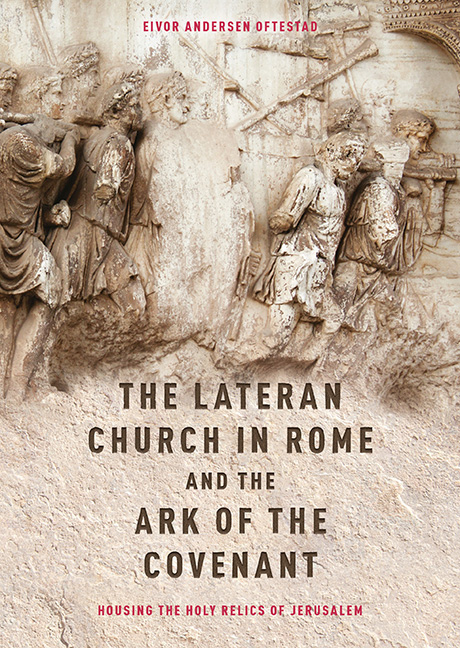 The Lateran Church in Rome and the Ark of the Covenant: Housing the Holy Relics of Jerusalem
The Lateran Church in Rome and the Ark of the Covenant: Housing the Holy Relics of Jerusalem Published online by Cambridge University Press: 31 August 2019
If you were to go into the cloister, you would see more than twelve young monks sitting in chairs in front of small tables and silently writing careful and skillful compositions. One could find all of the books of Jerome in explanation of the prophets, all of the books of St. Gregory the Great, and various books of St. Augustine, Ambrose, Isidore, Bede, and also Lord Anselm, abbot of Bec at the time and later archbishop of Canterbury.
‘The Group of St Amand’: The Group of Northern France and Belgium
The oldest versions of the Descriptio underwent a remarkable diffusion in monasteries of present-day northern France and Belgium, thereby entering a different frame of interpretation from the Roman reform context. Three of the manuscripts containing the Descriptio were composed at the abbey of St Amand in Picardy, while two of the others refer to the copying of an old book from the same abbey. In the twelfth century, the abbey of St Amand possessed one of the richest libraries in medieval Flanders. The Index major from this period (ed. 1150–1160) records a total of 389 volumes apart from liturgical books. According to the account of Herman of Tournai, a monk at a nearby monastery, we may assume that the different scriptoria borrowed books from each other. The connection between the different monasteries is particularly evident in the transmission of the description of the Lateran. It seems that all or most of the codices in groups II and III stem from the same geographical area centring around the abbey of St Amand. Lauer introduced the label ‘group of St Amand’. The ‘group of northern France and Belgium’ covers more of the relevant manuscripts and is consequently a more appropriate label, though less poetic.
From Rome To Northern France
The French manuscripts and the Belgian one contain earlier versions of the Descriptio than those in the Lateran archive. This means that the Descriptio was probably brought to northern France and Belgium before the middle of the twelfth century.6 A pilgrim may have brought the text back to his homeland on his return from Rome, or more probably it was brought by a prelate who had been sent on a mission to Rome and who spent his time writing and collecting texts while negotiating with the papal see.
To save this book to your Kindle, first ensure [email protected] is added to your Approved Personal Document E-mail List under your Personal Document Settings on the Manage Your Content and Devices page of your Amazon account. Then enter the ‘name’ part of your Kindle email address below. Find out more about saving to your Kindle.
Note you can select to save to either the @free.kindle.com or @kindle.com variations. ‘@free.kindle.com’ emails are free but can only be saved to your device when it is connected to wi-fi. ‘@kindle.com’ emails can be delivered even when you are not connected to wi-fi, but note that service fees apply.
Find out more about the Kindle Personal Document Service.
To save content items to your account, please confirm that you agree to abide by our usage policies. If this is the first time you use this feature, you will be asked to authorise Cambridge Core to connect with your account. Find out more about saving content to Dropbox.
To save content items to your account, please confirm that you agree to abide by our usage policies. If this is the first time you use this feature, you will be asked to authorise Cambridge Core to connect with your account. Find out more about saving content to Google Drive.